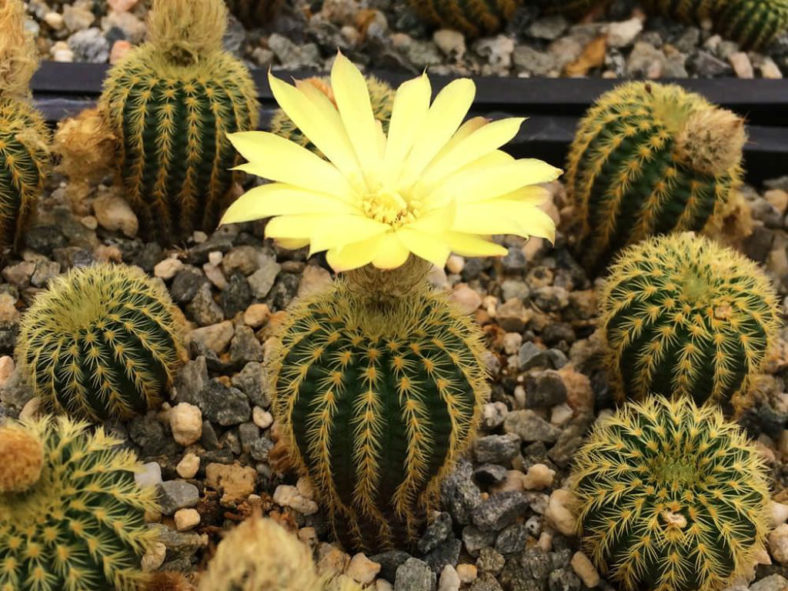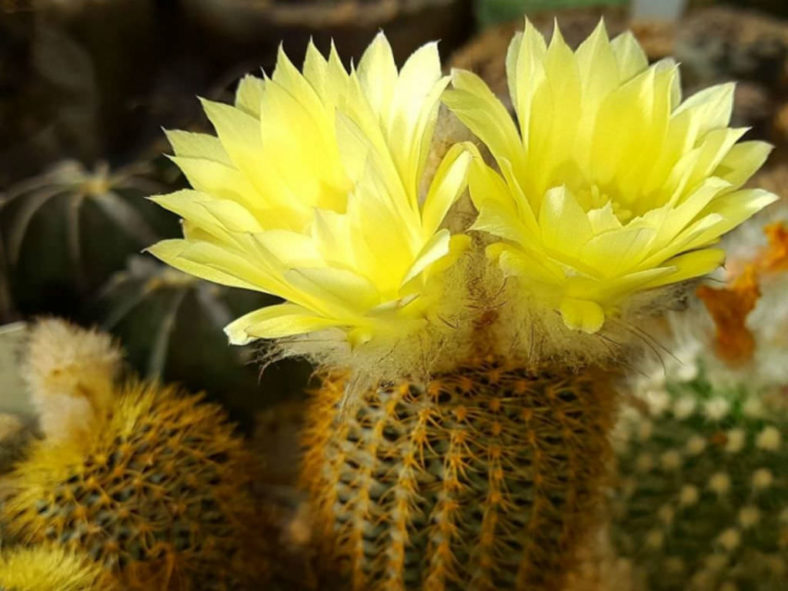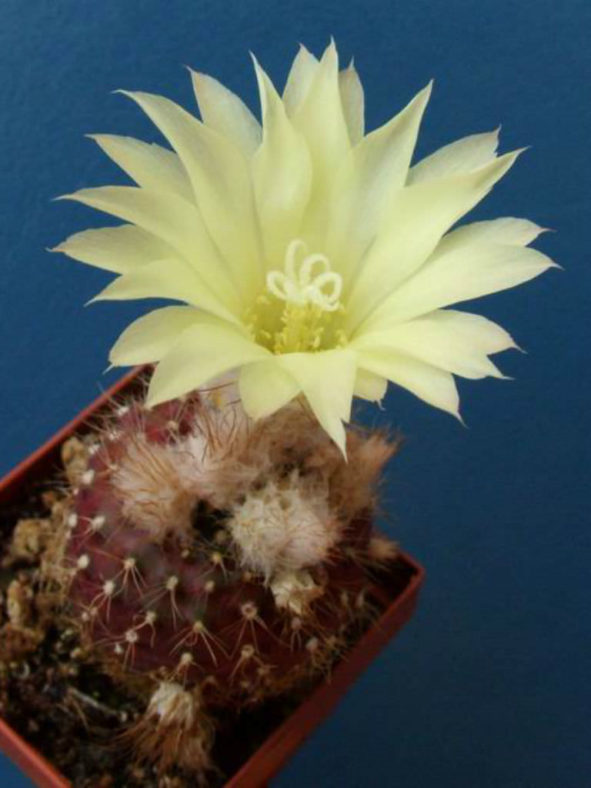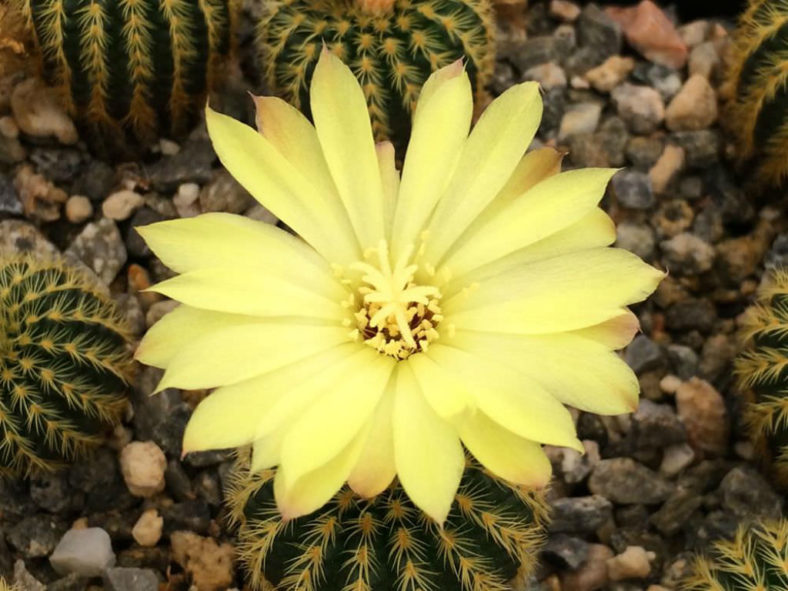Scientific Name
Frailea mammifera Buining & Brederoo
Synonym(s)
Astrophytum mammiferum, Frailea mammifera subsp. mammifera
Scientific Classification
Family: Cactaceae
Subfamily: Cactoideae
Tribe: Notocacteae
Genus: Frailea
Description
Frailea mammifera is a small cactus with subglobose, usually solitary stems with about 17 ribs lined with clusters of spines. The stem can grow up to 1.2 inches (3 cm) tall and 1 inch (2.5 cm) in diameter, sometimes branching basally. Each areole bears 2 to 4 central and 18 to 20 radial spines. The central spines are golden yellow to brown, erect, and stout, while the radial spines are yellowish to whitish, thin, and spreading.
The flowers are sulfur yellow and can reach up to 1 inch (2.5 cm) in diameter. They appear at the tips of the stems from late spring to early fall. The fruits are fuzzy light brown berries that become dry and indehiscent when ripe and contain flossy brown seeds.

Hardiness
USDA hardiness zones 9a to 11b: from 20 °F (−6.7 °C) to 50 °F (+10 °C).
How to Grow and Care
Fraileas perform best in full sun, but be cautious about placing them too close to a southern window where the flesh can burn. The tone of the cactus is darkest when it enjoys a full day of sunlight.
This short-lived plant rarely exceeds 15 years before it dies back. Here is a fun bit of information on Frailea. If plants are growing where no water is available, they can hide in the soil. Don't be shocked if your plant seems to have disappeared, as it is retracted under the soil just as it would in the dry season in its native region. Once sufficient moisture is available, the plant swells and is again visible on the top of the soil.
Caring for Frailea is a balancing act between sufficient moisture and periods of soil drying, so water is the biggest challenge in Frailea cactus care. Choose water that is free from heavy minerals. Water well once per week in summer, but in spring and fall, water only once every three weeks or when the soil is quite dry to the touch. The plant experiences no growth in winter and does not need water.
Learn more at How to Grow and Care for Frailea.
Origin
Frailea mammifera is native to Argentina (Entre Ríos), Brazil (Rio Grande do Sul).
Links
- Back to genus Frailea
- Succupedia: Browse succulents by Scientific Name, Common Name, Genus, Family, USDA Hardiness Zone, Origin, or cacti by Genus
Photo Gallery
Click on a photo to see a larger version.



